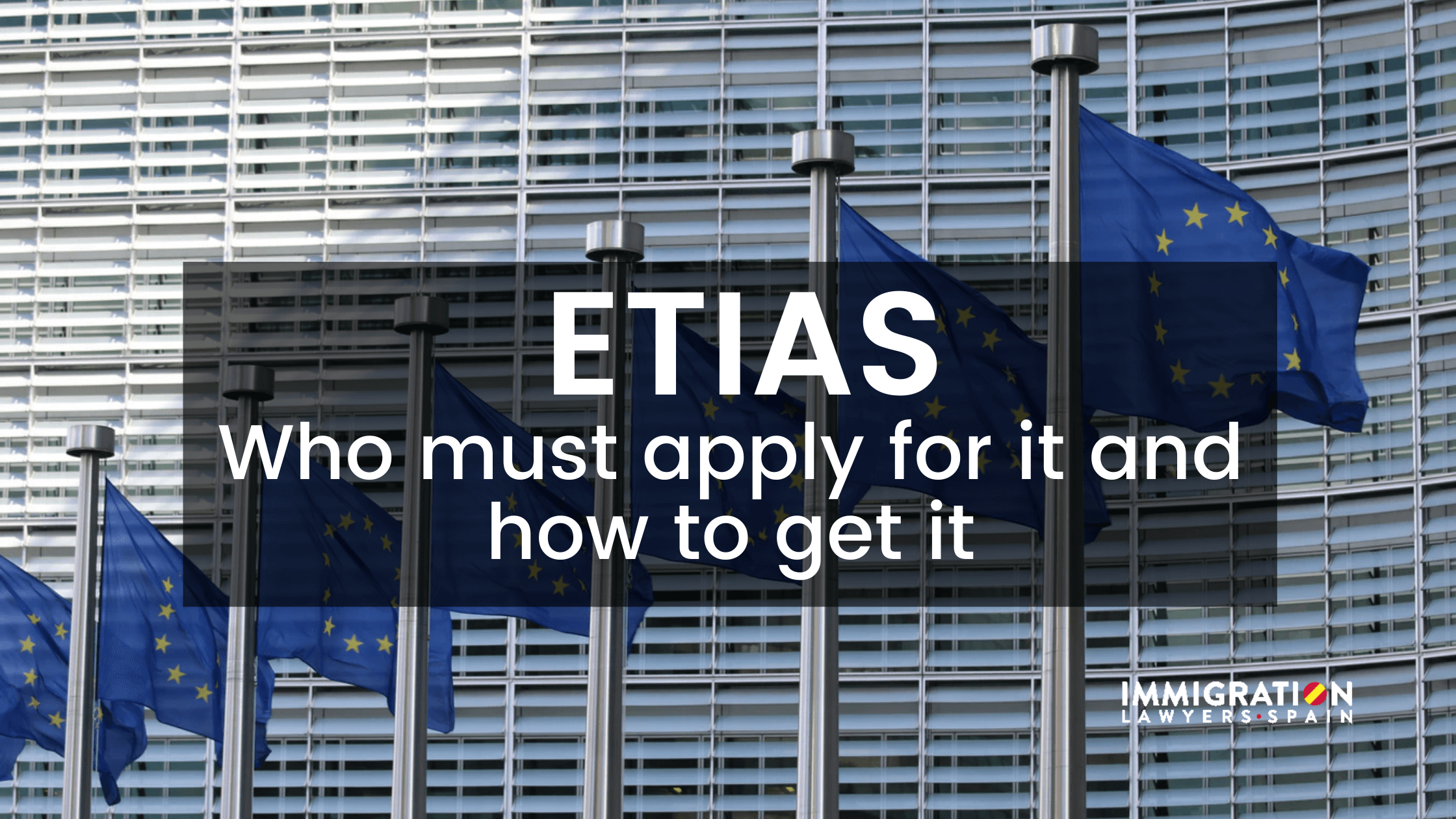
To make the European Union a safe place to live, work, and visit. That is the why this certificate was created. And really soon, if you want to enter any EU country for tourism, to visit a family member, for work reasons or simply to transit, it is very possible that you will need to apply for the ETIAS. In this post we will explain everything you need to know about it: how to obtain this certificate step by step, if you really need it, and when exactly will it be required, among others!
Content
ToggleWhat is the ETIAS certificate?
The Travel Information and Authorization System or ETIAS is a certificate that will allow all foreign citizens who wish to enter the Schengen Area to cross the borders successfully from now on.
It is a new computerized travel authorization created by the European Union and will be required to citizens who do NOT need to apply for a tourist visa to enter this area.
In other words, it is a certificate that allows the border authorities to verify that the traveler meets the entry requirements, and allows them to do so before the foreigner arrives in the country of destination (as it requires an online application well before jumping on the plane).
It is very similar to the U.S. ESTA or eTA in Canada.
So if you want to travel to Spain (or any other EU country) for tourism, business, or simply to transit, you must apply for this certificate once it becomes compulsory.
It will only be valid for trips of up to 90 days. At no time is it a substitute for a student or work visa. For any stay or residence longer than 3 months you must continue processing your visa at the Spanish consulate or embassy in your country of origin.
What is its purpose?
When the European Parliament approved the usage of this certificate they were very clear about it.
Its main objective was to provide greater security at European borders, facilitating the detection and identification of threats and dangers from people who want to travel to the Schengen Area.
Thus, the ETIAS certificate is an extra and preventive control that aims to prevent illegal immigration and the entry of terrorists or any other profile that may cause serious damage in the member countries of the area.
An extra step that the traveler must realize but that guarantees greater control and security for all.
This is the same that was being done in many other countries of the world.
Do you have any doubts? Get in touch with our immigration lawyers and receive personalized legal advice and all your doubts solved:
Who needs an ETIAS Visa for Spain?
All foreign citizens who currently do NOT have to apply for a tourist visa to enter any country in the Schengen Area must apply for the ETIAS.
Right now 59 countries will have to do it in order to cross the borders, adding an extra step to their usual easy and free process.
These countries are:
|
|
|
|
|
|
|
|
|
|
|
|
|
|
|
|
|
|
|
|
|
|
|
|
|
|
|
|
|
|
|
|
|
|
|
|
|
|
|
|
|
|
|
|
|
|
|
|
|
|
|
|
|
|
|
|
|
|
|
|
Nationals of countries that do need a tourist visa will follow the usual process as before, without having to ask for this certificate.
However, you must bear in mind that it does not affect movements within the Schengen Zone. That is to say, you will only be asked for the ETIAS certificate when entering. But once you are inside it will not be necessary if you try to move between countries.
In our article with the main reasons your entry to Spain can be denied we already saw how hard it could be to be returned to your country as soon as you reach the Spanish borders for not complying with a tiny requirement.
But with ETIAS you will not have this problem. You will know for sure if you can enter or not directly from your country of origin well before you travel. Hence you will save the price of a plane ticket that in the end could become useless.
How to apply for the ETIAS certificate?
The process is very fast, simple, and can be done entirely online in less than 10 minutes.
The first thing you must do is to enter the official registration form enabled by the European Union, which you will be able to find, once enabled, on this website.
Once you are in, you must fill in the required fields. with personal information and basic identification data.
Once you fill in the form you will receive an answer by e-mail. This answer will take only a few minutes but could be extended up to 48 hours (not usual).
Once you receive a positive response you will have to print the certificate and carry it with your passport, as the airline will require it before boarding the plane (and if you don’t carry it with you, you won’t be able to fly).
What happens if my ETIAS application is rejected?
If this happens, don’t worry. First of all, the Central ETIAS Unit will explain the reason for the refusal. Secondly, you will be able to appeal, preparing everything you have missed in the first application. Take note, however, that the ETIAS appeal process may differ depending on the country you applied from.
Generally, denials can be turned around, however, it is good to know how to avoid them in the first place. Possible reasons for denial include:
- Incomplete or incorrect documents or data, which you will have 10 days to provide or correct
- If you are requested to participate in an interview or video call, not attending this said interview
- Providing information that seems suspicious, misleading, or false
- Having an invalid or expired passport
- If you have been previously denied entry to any Schengen member country, as the Central ETIAS Unit has access to the Schengen Information System
In the event that the traveler presents certain security risks, there will be a series of extra checks to verify whether the authorization can be issued or not. Possible security risks include individuals who:
- Are terrorists or part of terrorist groups
- Are criminals with grave offences
- Are suspected of planning illegal emigration
- Have contagious or deadly diseases
ETIAS Visa requirements
As we have just mentioned, obtaining this certificate means filling in an online form with relevant personal information.
In addition, you must provide your passport (valid), a valid email (there they will send you the certificate), and a debit or credit card to make the payment of the corresponding fees.
And what personal information will you be asked for in the registration form?
- Your name and surname
- Date of birth
- Place of birth
- Sex
- Country of residence
- Data related to your passport
- A series of safety and health-related questions, for example about drug use or criminal history.
People involved in significant criminal activities will be directly denied this certificate. If you have important criminal records related to drugs, public disorder, violence, or trafficking, your entry to the Schengen Area will be automatically denied.
However, if you have minor crimes registered you will be able to apply for the ETIAS certificate anyway.
When will it be necessary?
It was initially planned to be 100% operational by 2021. But the process has suffered some delays and the ETIAS form is now expected to be required by May of 2025.
Therefore, you don’t have to worry about it yet. It won’t be until the end of next year that this registration will be compulsory to enter Spain.
In that sense, the delay is being considerable.
It was in the year 2016 that it got approved and all the preparations began. But it is because of the very functioning of this electronic certificate that the process is slowing down.
Because when you fill out the online application form, it is automatically crossed and checked through the various European Union security databases (those of migration of each country in the Schengen Area and the Interpol ones). This automated coordination, which will be so effective once live and that will allow some 30 million applications per year, makes internal management quite complex.
For how long is it valid?
Once your application is approved and you get your ETIAS, it will be valid for 3 years. Or, on the other hand, until the passport with which you applied for the certificate expires.
What should I do if I have double nationality?
This is a very important point and something you should consider if you have double nationality.
You will not be able to transfer the ETIAS permit between your two nationalities. That is: this certificate is associated with the passport you applied with, and at no time will applying for one will imply having it too in the other one.
Thus, our recommendation is simple. Always travel with the same passport with which you were granted the ETIAS permit.
Otherwise your entry will be denied.
Get in touch with our lawyers and let us guide you step by step:





